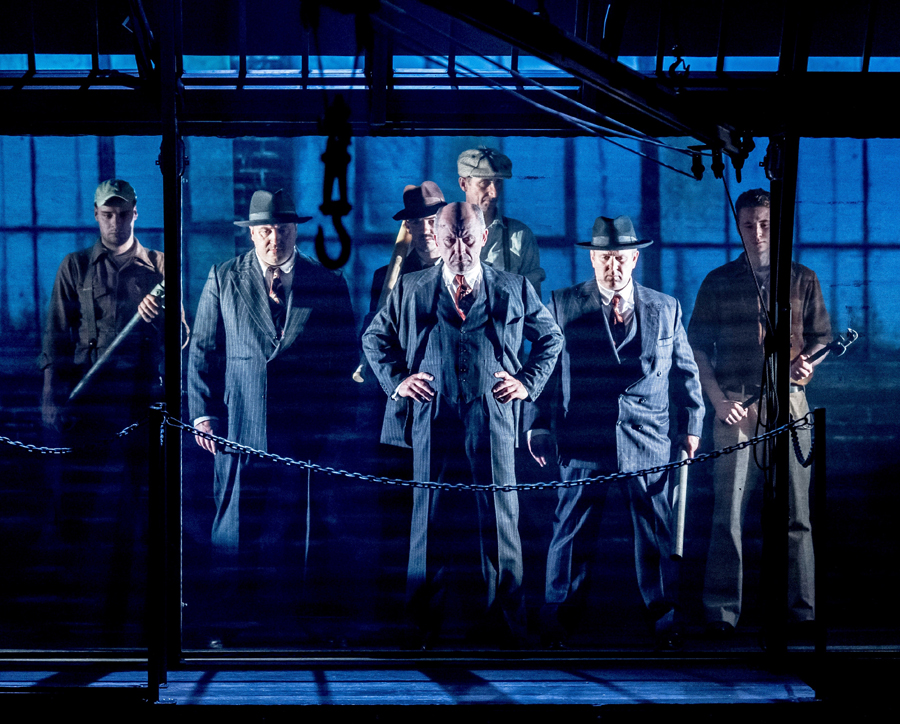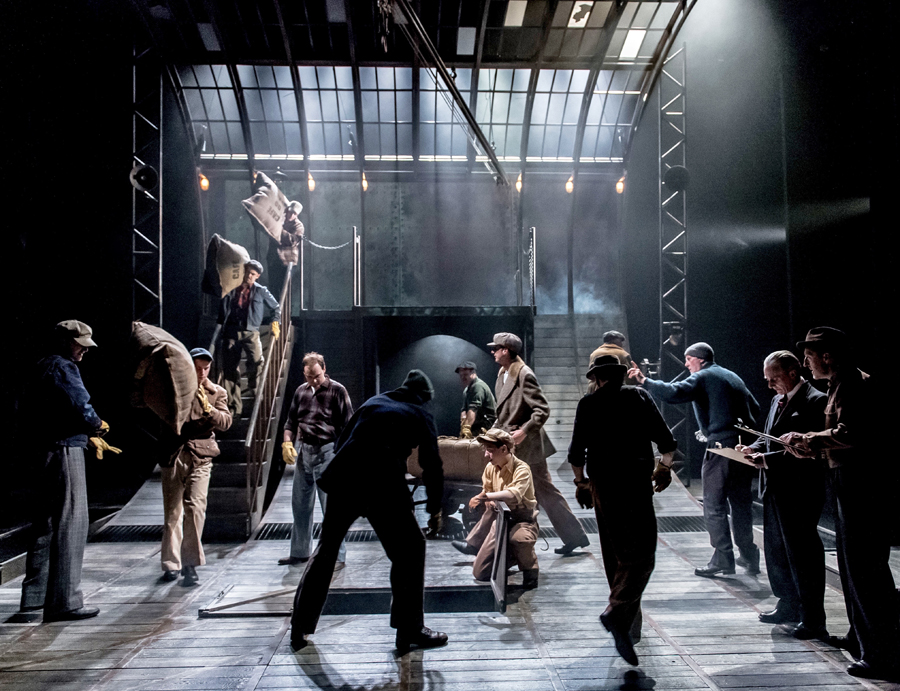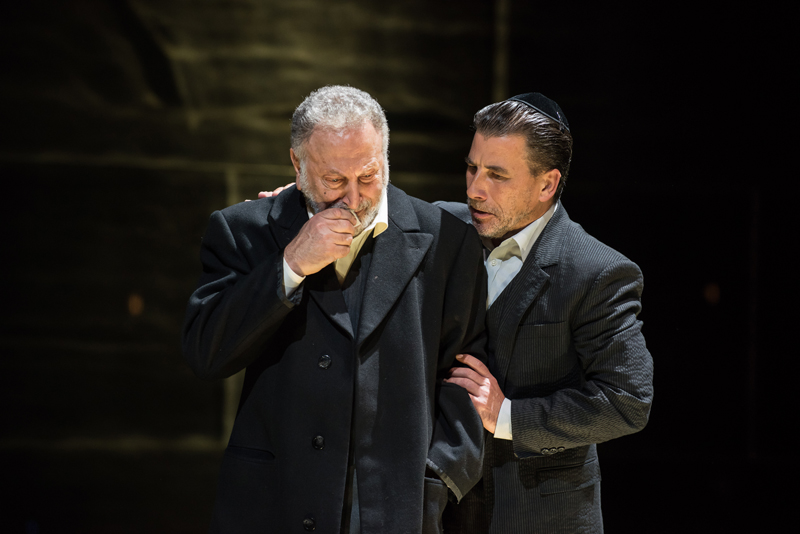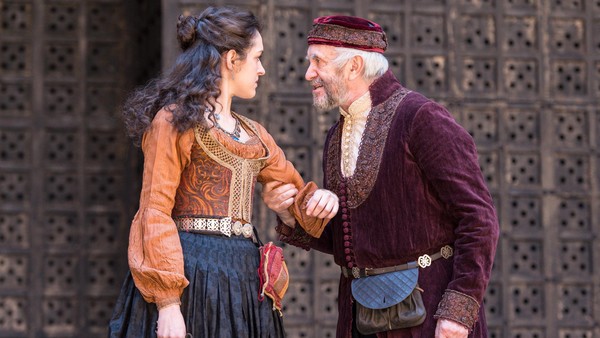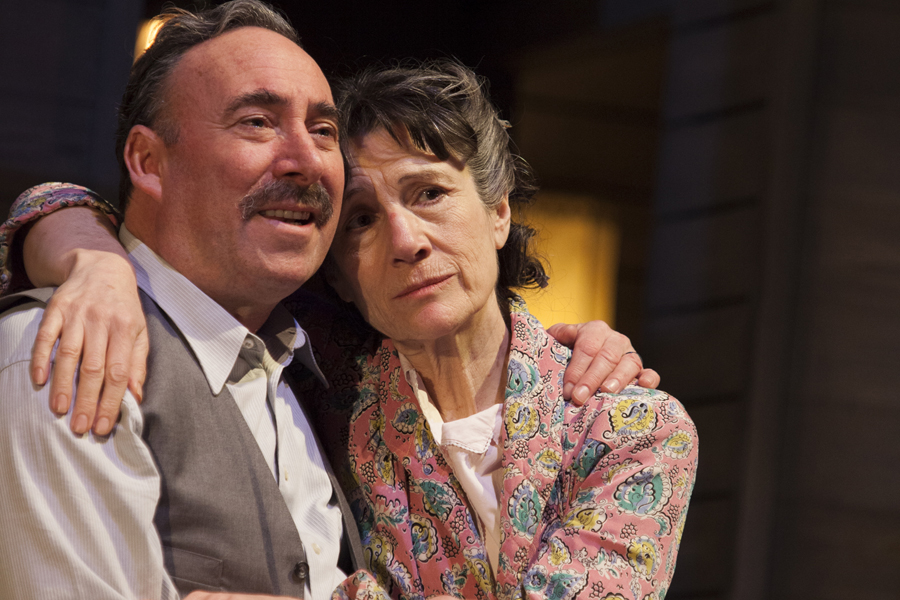 © Keith Pattison
© Keith Pattison
Franz Kafka's 1915 novella has always seemed uncannily prescient, first of life in Nazi-occupied Europe, then in the post-war Communist era. Now it assumes a whole new chilling significance in a 21st century full of mass media scrutiny, social media, online surveillance and CCTV.
Joseph K (played by Rory Kinnear) finds himself on trial for an unspecified crime. He is informed he is under arrest after a rude awakening by a pair of court officials who make off with some of his personal effects. At first it hardly affects his daily life and work, but soon righteous indignation gives way to frustration at not being able to get across his case and how it is progressing through seemingly unending layers of bureaucracy. So obsessive paranoia kicks in, fuelled by an uneasy sense of unspecified guilt, as events move inexorably – and not without a grim quirky humour – towards a dark conclusion.
The fable has proved attractive to theatre practitioners, including, notably, Steven Berkoff and now it has attracted the attention of playwright Nick Gill and director Richard Jones, himself no slouch in the staging of the dark and quirky. Together with designer Miriam Buether, costume designer Nicky Gillibrand, lighting designer Mimi Jordan Sherin and composer and sound designer David Sawer (sound also by Alex Twiselton), they have come up with a version that reflects the Kafkaesque in the era of Facebook and Twitter exactly one hundred years after Kafka wrote it.
Jones’s hugely accomplished and dedicated cast, led by Kinnear, skilfully negotiate Buether’s highly original conveyor belt set, moving between two banks of seating, casting the audience as jurors, and delivering rooms and offices as required. There’s something voyeuristic too about peering at these rooms furnished with coffee tables of family photographs, which also sits well with the paranoia. Best of all is that Kinnear’s increasingly-perspiring Joseph succumbs first gradually, and then faster and faster, to guilty feelings as he delves back through his life; starting with preschool toddler days, finding reasons to be guilty that would have done Sigmund Freud proud.
Kinnear gives an extraordinary performance, hugely intelligent and as open as a wound. Kate O’Flynn is wonderfully versatile as the young women and girls in this stage of Joseph’s life, from the what-you-see-is-what-you-get barmaid, who is everything from the girl next door, to sexy temptress and demanding adolescent. Sian Thomas shines in a terrific pair of turns as the stridently ineffective lawyer from hell and a scarily smooth doctor, and Hugh Skinner (the useless intern from TV comedy W1A) relishes two contrasting roles as a dangerously aspirational Number Two at Joseph K’s office and a terrifying example of what might be in store for K as an accused man almost at the end of the process on which he has inexorably been set. The rest of the cast are equally superb, working especially well in various incarnations of a sinister ensemble. Sarah Fahie's movement direction enhances their shifting stage pictures, raising the threat level exponentially as the conveyor belt rolls by.
Gill’s update mostly works a treat (or should that be a threat!). My only quibble is with the semaphore babble of K’s internal monologues, where verbs become imperatives with which he addresses himself, sentences and phrases lose the odd word and words lose the odd letter – "and" for example becoming "an". To quote the opening lines: “An almost woke ee up one morn – like baby innocent an bold, the great white hole, lord of all surveys, unslandered, clear of mind an hurt, future ahead an ee all indestructible – Josef K.”
These soliloquies are interestingly idiosyncratic, but they are more jarring than arresting (pun unintended).
By Judi Herman
The Trial runs until Saturday 22 August. 7.30pm & 2.30pm. £10-£35, £10 concs. Young Vic Theatre, 66 The Cut, SE1 8LZ; 020 7922 2922. www.youngvic.org



